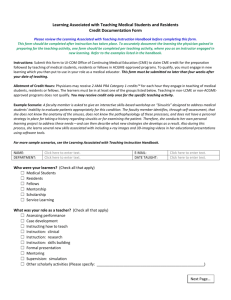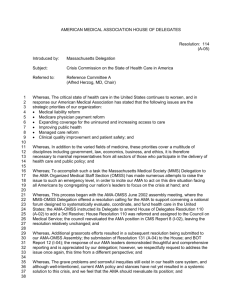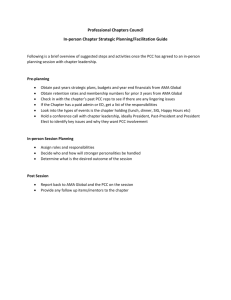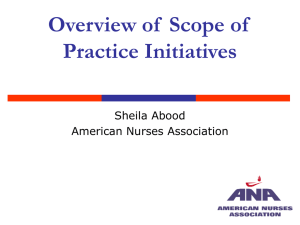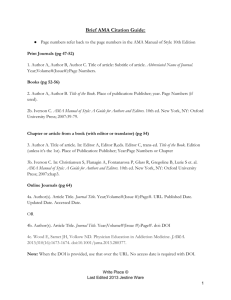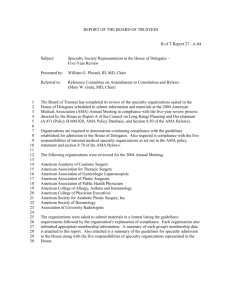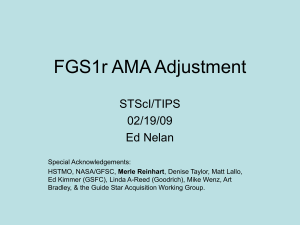report of the board of trustees
advertisement
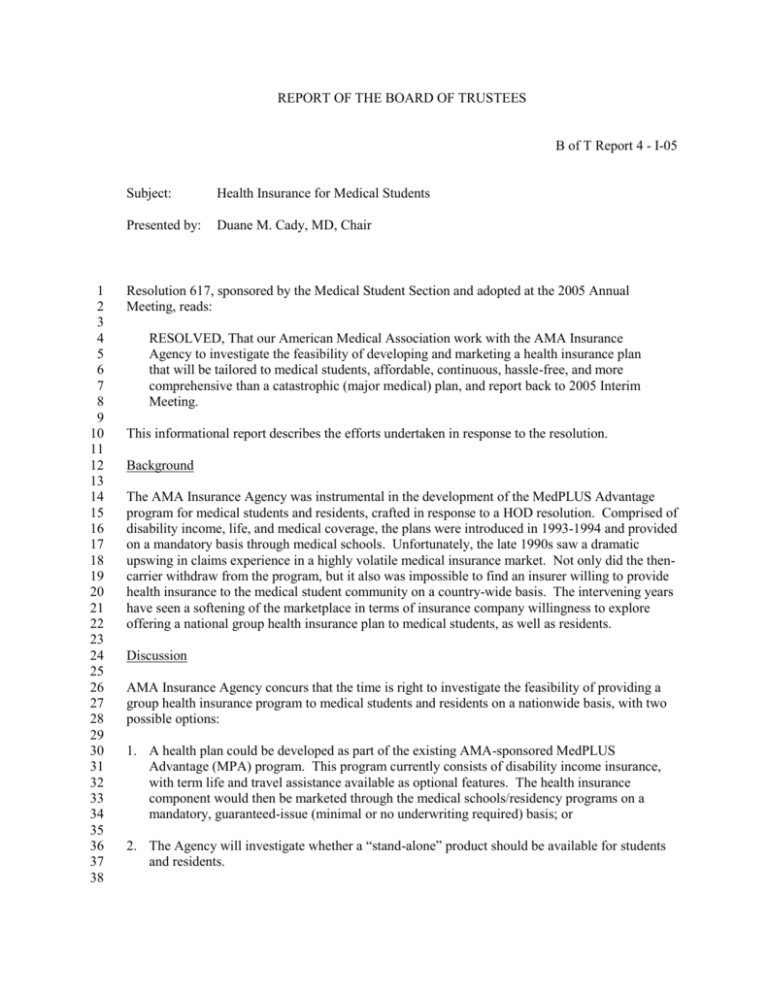
REPORT OF THE BOARD OF TRUSTEES B of T Report 4 - I-05 1 2 3 4 5 6 7 8 9 10 11 12 13 14 15 16 17 18 19 20 21 22 23 24 25 26 27 28 29 30 31 32 33 34 35 36 37 38 Subject: Health Insurance for Medical Students Presented by: Duane M. Cady, MD, Chair Resolution 617, sponsored by the Medical Student Section and adopted at the 2005 Annual Meeting, reads: RESOLVED, That our American Medical Association work with the AMA Insurance Agency to investigate the feasibility of developing and marketing a health insurance plan that will be tailored to medical students, affordable, continuous, hassle-free, and more comprehensive than a catastrophic (major medical) plan, and report back to 2005 Interim Meeting. This informational report describes the efforts undertaken in response to the resolution. Background The AMA Insurance Agency was instrumental in the development of the MedPLUS Advantage program for medical students and residents, crafted in response to a HOD resolution. Comprised of disability income, life, and medical coverage, the plans were introduced in 1993-1994 and provided on a mandatory basis through medical schools. Unfortunately, the late 1990s saw a dramatic upswing in claims experience in a highly volatile medical insurance market. Not only did the thencarrier withdraw from the program, but it also was impossible to find an insurer willing to provide health insurance to the medical student community on a country-wide basis. The intervening years have seen a softening of the marketplace in terms of insurance company willingness to explore offering a national group health insurance plan to medical students, as well as residents. Discussion AMA Insurance Agency concurs that the time is right to investigate the feasibility of providing a group health insurance program to medical students and residents on a nationwide basis, with two possible options: 1. A health plan could be developed as part of the existing AMA-sponsored MedPLUS Advantage (MPA) program. This program currently consists of disability income insurance, with term life and travel assistance available as optional features. The health insurance component would then be marketed through the medical schools/residency programs on a mandatory, guaranteed-issue (minimal or no underwriting required) basis; or 2. The Agency will investigate whether a “stand-alone” product should be available for students and residents. B of T Rep. 4 - I-05 -- page 2 1 2 3 4 5 6 7 8 9 10 11 12 13 14 15 16 17 18 19 20 21 22 23 24 25 26 27 28 29 30 31 32 33 34 35 36 37 38 39 40 As directed by the resolution, AMA Insurance Agency began investigation into the feasibility of developing and marketing a program of health insurance to medical students and residents. A request for proposal has been developed for dissemination to a number of recognized insurance companies. It is difficult to predict the ultimate degree of interest at this point. However, AMA name recognition, coupled with the Agency’s presence in the medical school marketplace via MPA, may help to spur receptivity to provide a quote by health insurance carriers. The process includes several steps: 1. Request for proposal development and mailing to identified insurance underwriters, using AMA-required criteria; 2. Evaluation of responses for rate/benefit competitiveness; 3. External actuarial analysis of the submitted bids; 4. Due diligence review by the Agency of the responding insurance companies; 5. Contract negotiation; and 6. Market launch. Steps 1-4 are anticipated for completion by the end of October 2005, which will provide the Agency the ability to gauge marketplace interest and determine the feasibility of developing and marketing a health insurance plan for medical students and residents that meets the conditions set forth in Resolution 617. If the requirements for a plan are met that satisfy the directives of Resolution 617, the Agency will then undertake Steps 5-6 noted above. Staff cost is estimated to be at least $14,513 to investigate the feasibility of developing and marketing a health insurance plan for medical students and residents. It is possible that the cost could fall in the range of $50,000 to $75,000 for staff time, travel, and legal expenses, depending on the duration and potential results of the investigation. Conclusion Through its wholly owned subsidiary, AMA Insurance Agency, Inc., the AMA has negotiated several comprehensive and competitively-priced insurance programs for its members, including the current disability income/life plans for students. Given this, the primary risk of failing to offer student/resident insurance coverage is missing an opportunity to use our market power on behalf of our student AMA Members. While securing coverage that meets the parameters outlined--and with a carrier which meets AMA-prescribed industry ratings of “excellent” or better--is not guaranteed at this time, the development of such a program will continue to be high priority activity in the coming months.
